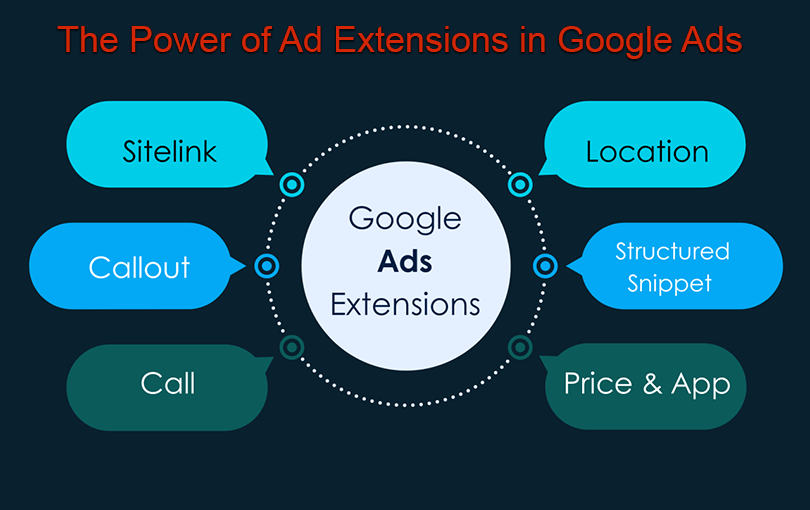One of the most effective strategies within Google Ads is the use of ad extensions. These powerful tools enhance the visibility of your ads, making them more attractive to potential customers and improving overall campaign performance.
What Are Ad Extensions?
Ad extensions are additional pieces of information that you can add to your Google Ads text ads. They appear alongside your ad, giving users more reasons to click. Extensions provide extra details about your business, such as contact information, additional website links, special offers, and more. The best part? Google doesn’t charge extra for clicks on ad extensions, meaning you get more value out of your advertising budget.
Types of Ad Extensions
Google offers several types of ad extensions, each designed to cater to different business needs:
Sitelink Extensions:
These allow you to add additional links to your ad, directing users to specific pages on your website. For example, an online retailer might use sitelinks to direct users to specific product categories like “Men’s Shoes” or “New Arrivals.”
Call Extensions:
Perfect for businesses that value phone calls, call extensions display your phone number directly in the ad. Mobile users can click the number to call your business directly, making it easier for potential customers to reach you.
Location Extensions:
These show your business’s address, making it easy for users to find you. This is particularly useful for brick-and-mortar stores looking to drive foot traffic.
Callout Extensions:
Highlight specific offers, deals, or unique selling points about your business. For example, you might use callout extensions to emphasize free shipping or 24/7 customer support.
Structured Snippet Extensions:
These allow you to highlight specific aspects of your products or services. For instance, a hotel might use structured snippets to list amenities like “Free Wi-Fi” or “Breakfast Included.”
Price Extensions:
Showcase your products or services along with their prices directly in the ad, giving users an immediate sense of what you offer and how much it costs.
App Extensions:
If you have a mobile app, these extensions allow users to download it directly from your ad.


Benefits of Using Ad Extensions
Incorporating ad extensions into your Google Ads strategy can provide several key benefits:
- Improved Ad Visibility:
Ad extensions make your ads more prominent, increasing the likelihood of attracting clicks. Ads with extensions often occupy more space on the search results page, making them more noticeable.
- Enhanced Click-Through Rate (CTR):
By providing more information and giving users multiple options to engage with your ad, extensions can significantly boost your CTR.
- Better Ad Rank:
Google factors in ad extensions when calculating your ad rank. A higher ad rank means your ad is more likely to appear in top positions, further increasing visibility.
- Increased Conversions:
With more relevant information at their fingertips, users are more likely to convert after clicking on your ad. Whether it’s making a purchase, calling your business, or visiting your store, ad extensions can drive meaningful actions.
- Cost Efficiency:
Since Google doesn’t charge extra for clicks on ad extensions, you get more engagement without increasing your budget.
Best Practices for Using Ad Extensions
To maximize the benefits of ad extensions, follow these best practices:
- Use Relevant Extensions:
Choose extensions that align with your business goals and the needs of your target audience. For example, if you’re running a promotion, use callout extensions to highlight the offer.
- Test and Optimize:
Like all aspects of digital marketing, it’s important to test different extensions to see which ones perform best. Monitor performance metrics and adjust your strategy accordingly.
- Keep Extensions Updated:
Ensure that all information in your extensions is accurate and up to date. Outdated details can confuse potential customers and negatively impact your campaign.
- Combine Multiple Extensions:
You can use more than one type of extension in a single ad. For example, combining sitelink, callout, and call extensions can provide a comprehensive view of your offerings.
Conclusion
Ad extensions are a powerful feature in Google Ads that can significantly enhance the performance of your campaigns. By providing more information and increasing the visibility of your ads, they help you attract more clicks, improve ad rank, and ultimately drive more conversions. Whether you’re looking to boost online sales, increase phone calls, or drive foot traffic to your store, leveraging ad extensions is a smart strategy to get the most out of your Google Ads investment.


